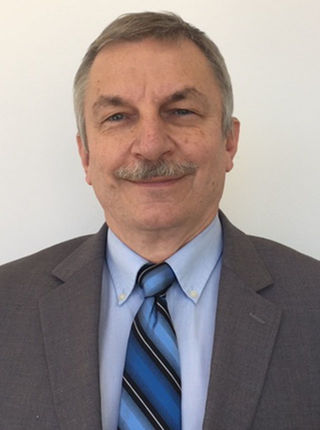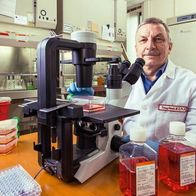Tomasz Skorski, MD, PhD, DSc
Director, Fels Cancer Institute for Personalized Medicine
Associate Director, Fox Chase Cancer Center
Professor, Department of Cancer and Cellular Biology
Professor, Microbiology, Immunology and Inflammation

- Contact Information
-
- About Me
-
Research Interests
My laboratory focuses on determination of the role of DNA repair mechanisms in acute (AML, ALL) and chronic (CML) leukemias including the potential of therapeutic interventions. We found that acute and chronic leukemia stem cells (LSCs) accumulate potentially lethal DNA double strand breaks (DSBs), but homologous recombination (HR) and nonhomologous endjoining (NHEJ) protect their survival. Normal cells use BRAC1/2dependent HR and DNAPK –mediated NHEJ to prevent DSBtriggered apoptosis. However, leukemia cells may employ RAD52 mediated HR and PARP1mediated NHEJ. These changes may be driven by genetic and epigenetic aberrations. Individual patients with leukemias displaying deficiencies in specific DSB repair pathway are identified by Gene Expression and Mutation Analysis (GEMA). We explore these differences to target tumorspecific DNA repair mechanisms to achieve “synthetic lethality” in leukemia cells, with negligible effects on normal cells. These studies will lead to novel therapeutic approaches based on induction of personalized medicineguided synthetic lethality in leukemias from individual patients. We were first to demonstrate that targeting RAD52 can be successfully applied in individual leukemias identified by GEMA.
In addition, we examine the role of signaling pathways generating reactive oxygen species (ROS)induced oxidative stress in CML chronic phase (CMLCP) LSCs and leukemia progenitor cells (LPCs). We were first to show that CML primary cells, including quiescent and proliferating LSCs and proliferating LPCs accumulate high levels of reactive oxygen species (ROS) and oxidative DNA damage, including numerous DNA double strand breaks (DSBs). In addition, we discovered that BCRABL1 kinase affects DNA repair pathways: it stimulates unfaithful DSB repair and nucleotide excision repair pathways and inhibits mismatch repair and base excision repair pathways causing genomic instability represented by accumulation of imatinibresistant BCRABL1 kinase mutants and additional chromosomal aberrations. Genomic instability induces CMLCP relapse and/or progression toward more malignant blast phase (CMLBP). Nowadays, most of the CMLCP patients are treated with tyrosine kinase inhibitors (TKIs) such as imatinib, dasatinib, and nilotinib, which eliminate proliferating cells, but quiescent LSCs are refractory to TKIs. Since TKIrefractory quiescent LSCs accumulate ROSinduced oxidative DNA damage and genetic aberrations causing disease relapse/progression we will develop experimental therapeutic modalities to eradicate these cells.
- Education, Training & Credentials
-
Educational Background
- DSc, Medical Center for Postgraduate Education, 1990
- PhD, Medical Center for Postgraduate Education, 1986
- MD, Medical Academy of Warsaw, 1982
- DSc, Medical Center for Postgraduate Education, 1990
- Publications
-
Digital Bibliography

